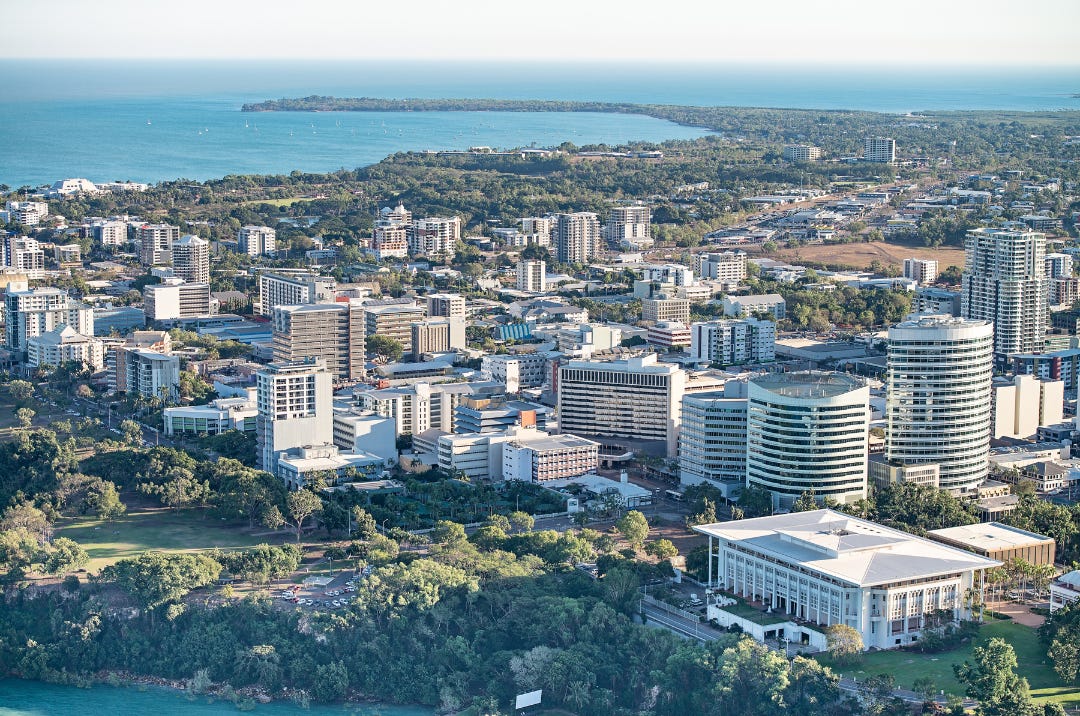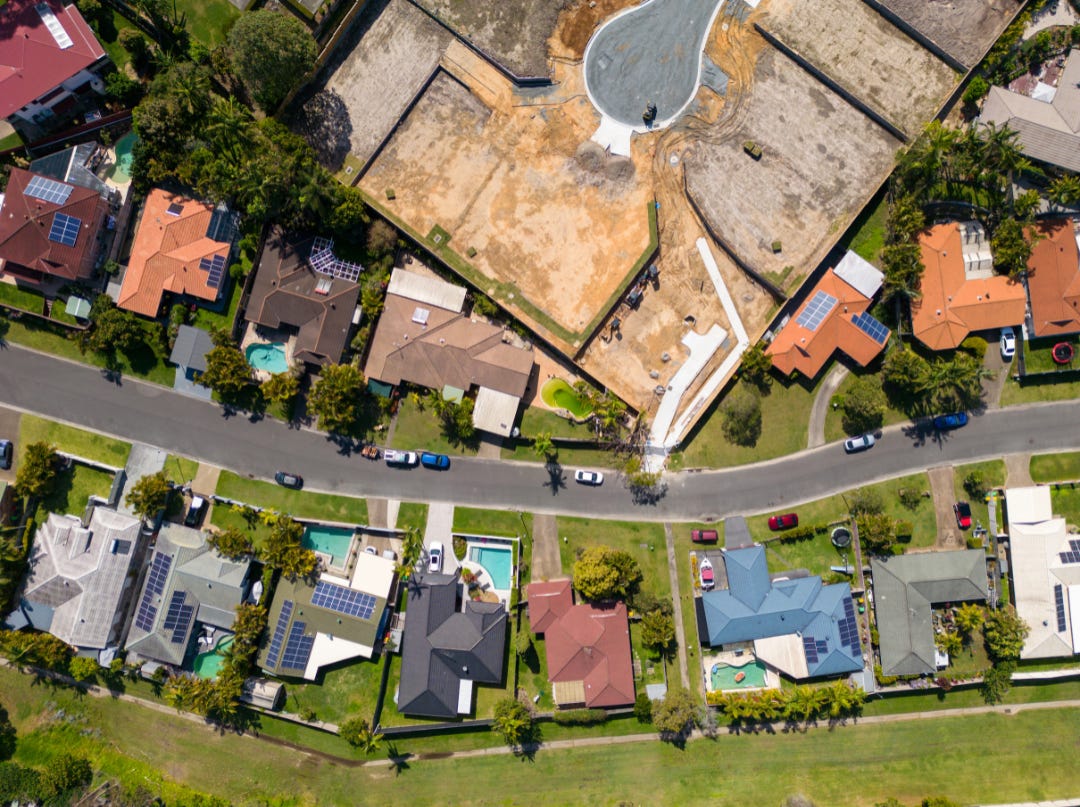Groundswell Property Market Insights
Wealth Surges Past $17 Trillion, Property Leads the Charge, and Values Rise Nationwide: Key Insights as at 05 July 2025
Welcome to this week’s edition of Groundswell Property’s Market Insights, where we cut through the media noise and deliver real, data-driven updates on Australia’s ever-changing property market.
City of Gold Coast: Unsplash
From booming national wealth and strong price growth in key capitals to new rental regulations and major redevelopment activity — this week’s update is stacked with data and insights that reinforce one thing: property remains the engine room of Australian wealth.
Here’s what we’re seeing right now:
📈 Household wealth hits a record $17.3 trillion — with property making up 68% of it
🏠 National dwelling values rise for the fifth month in a row — up 1.4% for Q2
🌆 Darwin emerges as the hottest market in Australia, according to Hotspotting
🌄 Regional markets outperform capital cities over the past 12 months
🛑 Councils’ short-stay rental crackdowns show little impact on long-term supply
📋 New rental rules roll out across NSW, VIC, QLD, WA and SA
🔨 Over 20,000 homes approved for demolition — signalling a wave of infill development
Property Pushes Up Wealth
Rising property prices have helped drive up Australia’s household wealth to record levels, surpassing $17 trillion for the first time.
According to Australian Bureau of Statistics figures, household wealth has jumped 57% in the past five years, from $11 trillion in 2020 to $17.3 trillion in the March 2025 quarter.
Real estate plays a big role in that growth, as it now accounts for more than two-thirds of total household wealth in Australia.
The combined value of property assets rose by $652 billion in the past 12 months, to a total value of $11.7 trillion, which is higher than the total value of Australian superannuation ($4.14 trillion) and the share market ($1.87 trillion).
The data shows that real estate remains the cornerstone of Australian financial security.
Property has added more to household wealth than any other single asset class since 2020 and it remains the primary vehicle for wealth accumulation, particularly through capital gains and inter-generational transfers.
Looking ahead, Australia’s strong property bias, coupled with an ageing population and intergenerational wealth transfers, is expected to keep property at the heart of household wealth creation for years to come.
CommSec economist, Ryan Felsman, says the March quarter growth in household wealth overall was the weakest since late 2022, but momentum is likely to rebound.
Pace of Growth Increases
The pace of property price growth increased in the second quarter of 2025, with the latest data showing that dwelling values are up for a fifth consecutive month.
Nationally dwelling values rose 1.4% in the June quarter, compared with 0.9% in the previous quarter.
The latest results mean all capital city markets have achieved price growth in the past 12 months, with the smaller capital cities achieving the most significant gains.
Cotality data says Darwin median dwelling values are up the highest at 4.9%. Hotspotting’s Winter 2025 Price Predictor Index (PPI) has identified Darwin as an “undeniably hot market”.
It says Darwin is now the hottest market in Australia with rising sales activity and solid price growth after a long period of sub-par performance.
The Cotality data shows that dwelling values have increased by 2.1% in the past quarter in Perth and 2% in Brisbane. Canberra is up 1.3%, while Sydney, Melbourne and Adelaide are all up by 1.1% and Hobart is up 0.9%.
While the combined capital cities have achieved quarterly and yearly growth, the combined regional markets are still outperforming them.
Over the past 12 months, combined regional dwelling values have risen by 5.5% compared with 2.7% for the combined capital cities.
Cotality research director, Tim Lawless, says a range of factors are set to shape housing market outcomes over the rest of the year.
“Persistently low levels of new housing supply are likely to support values. Lower debt servicing costs, along with reduced cost-of-living pressures, should support consumer sentiment and high commitment decision making, working in favour of housing demand,” he says.
Holiday Rental Cap No Solution
While Councils throughout Australia have introduced restrictions on short-term holiday letting, new research shows it is doing little to improve the supply of long-term housing.
Some councils are forcing owners to pay higher rates if they list their properties on short-term letting apps such as Airbnb or Stayz while others are restricting the amount of time properties can be rented for holiday letting during the year.
Researchers from the University of Queensland analysed whether restricting the amount of time property could be used for holiday letting would free up homes for long-term rental or reduce rents.
Professor Alicia Rambaldi and Dr Frank Zou found that while restrictive policies resulted in a temporary drop in listings of properties on short stay sites, it soon reverted back to previous levels.
“(There was) no significant or sustained reduction in short-term rental activities,’’ Zho says.
The researchers say it is difficult for councils to check if owners are operating within the rules.
Rambaldi says they found no significant rent decrease in rents in the study area either.
"Even with restrictions, not everyone will put their short-term rental property back onto the long-term rental market—it's just not realistic."
New Financial Year, New Rental Rules
The start of the new financial year brings with it a raft of new rules around the renting of investment properties.
New South Wales renting agents will have to reveal if rental listing photographs have been digitally altered. This includes enhanced lighting, retouched walls, or altered room proportions.
It is also introducing a standardised rental application form, which clarifies exactly what data landlords and agents are allowed to request.
Queensland is introducing new standardised rental application forms and rules limiting the type of personal information that can be collected and stored. It is changing the minimum notice period for property entry from 24 to 48 hours.
In Victoria, new legislation will come into effect from November banning all forms of rent bidding, extending notice periods for rent increases and evictions from 60 to 90 days. It also outlaws no-fault evictions.
The new rules call for mandatory smoke alarm checks and tighter underquoting penalties and require that properties meet minimum standards before they’re advertised.
In Western Australia, rent bidding has been banned, and rent increases will only be allowed every 12 months.
South Australia introduced similar rent bidding restrictions in 2024, including longer notice periods for ending tenancies and restrictions on rent increases.
20,000 Homes to Be Knocked Down
As most States grapple with how to build more housing, new figures show more than 20,000 were approved for demolition in the past 12 months.
The ABS data shows 18,864 homes were approved for demolition and 1146 units.
Melbourne had the largest number of demolition approvals, 6075, followed by Sydney with 5691, Brisbane, 2106 and Perth, 1433.
REA Group senior economist, Anne Flaherty, says the knockdowns are actually a sign of more housing to come.
“Demolitions happen because new homes are being built,” she says.
“If we look at how many homes we need to build, we need to take into account the fact that a percentage of the new homes that are going to be built are going to result in demolitions.
“Many of these approvals likely involve the replacement of one home with two or more dwellings, such as duplexes, townhouses, or apartment developments.”
There were more than 181,000 new homes approved for construction in the past 12 months.
Flaherty says the densification of existing suburbs, particularly those near transport hubs, is a key strategy to address the housing crisis.
“It’s very expensive to build new, which means the kinds of homes being built are the ones most likely to generate sufficient profits for developers,” she says.
Key Takeaways:
Real estate continues to be Australia’s largest and most powerful wealth-building asset class
Momentum is returning across both capital cities and regional markets
Darwin, Perth, and Brisbane are leading the charge in quarterly growth
New legislation is reshaping how investors manage and rent their properties
Knockdown approvals show densification is the key play for future development
📌 While media commentary often misses the big picture, the data confirms it: property remains central to long-term wealth creation in Australia.
If you're serious about making your next move count — whether it’s expanding your portfolio, upgrading your strategy, or turning equity into income — now is the time to act with clarity and purpose.
✅ Make 2025 Your Breakthrough Year in Property
🎯 Book your free strategy call with our expert team.
Get clear on your next move, avoid costly mistakes, and build a smarter path to wealth.
Tom Haigh
Director & Licensed Buyers Agent
Groundswell Property - a decade of trusted advice
tom@groundswellproperty.net
0439754475








